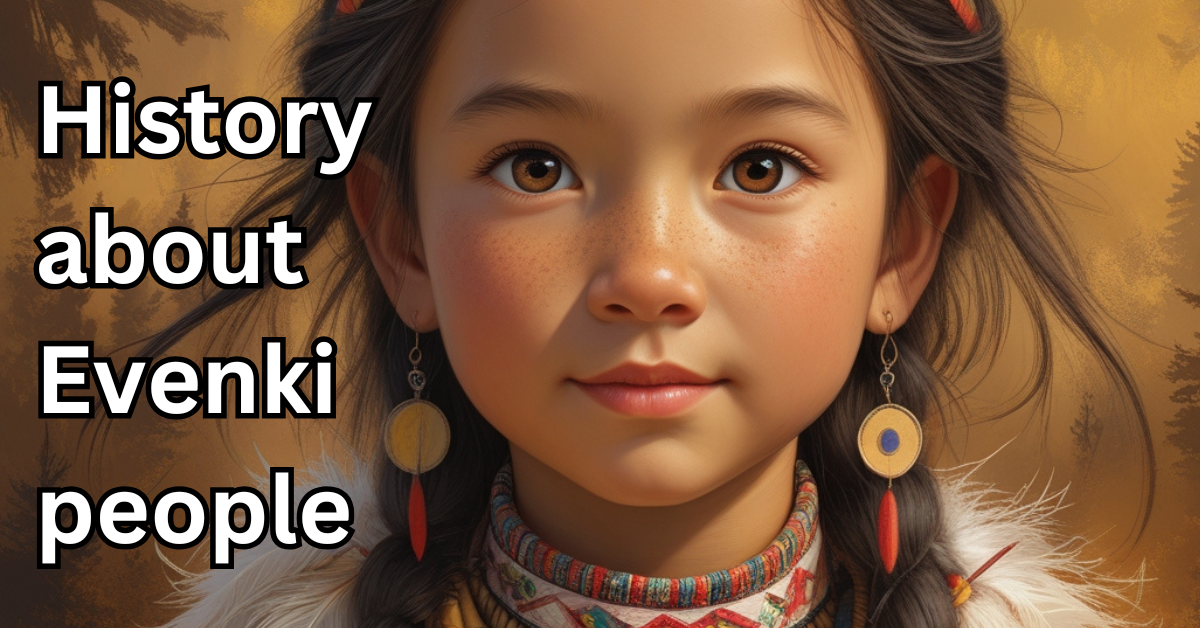Evenk People
The Evenk are the largest and most widely dispersed ethnic group among the many small communities in northern Siberia, also known as Asian Russia. By the early 21st century, their population was around 70,000. A small number reside in Mongolia, while the remainder is split almost equally between Russia and China.
The Evenk have two distinct cultural traditions. One group consists of hunters and reindeer herders who inhabit the vast taiga (boreal forest) from the Ob-Irtysh watershed to the Sea of Okhotsk and Sakhalin, stretching from the Amur River basin in the south to the Arctic Ocean in the north. The other group comprises horse and cattle pastoralists or sedentary farmers in Transbaikalia, northeastern China, and Mongolia. Many Evenk are bilingual, and more than half no longer speak the Evenk language as their first language.
Traditionally, Evenk society was organized into clans with patrilineal descent. Each clan shared a communal fire, prayed to common ancestor spirits, and was governed by an elders’ assembly that included a shaman.
Following the Russian Revolution of 1917, the Russian Evenk were collectivized into farms, and in 1930, the Evenk national (now autonomous) okrug (district) was established. Many nomadic Evenk were settled, and their traditional economy was supplemented with fur farming, agriculture, and industrial occupations.
Siberia Overview
Siberia, a vast region in northern Asia, spans Russia and northern Kazakhstan. It stretches from the Ural Mountains in the west to the Pacific Ocean in the east and from the Arctic Ocean in the north to the borders of Mongolia and China in the south.
Geography
Almost all of Siberia lies within Russia, excluding administrative areas east of the Urals, the Pacific coast, and parts of Kazakhstan. Its broader definition covers about 5.2 million square miles (13.5 million square kilometers), while the narrower Russian definition encompasses 2.5 million square miles (6.5 million square kilometers). Siberia comprises regions such as Eastern and Western Siberia and includes republics like Sakha (Yakutia), Buryatia, Altay, Khakasiya, and Tuva.
Geographically, Siberia features four major regions:
- West Siberian Plain – Drained by the Ob and Yenisey rivers, with vast swamplands.
- Central Siberian Plateau – A mix of plains and plateaus.
- Northeastern Siberia – A complex terrain of mountains, massifs, and basins.
- Baikal Region – Centered around Lake Baikal in south-central Siberia.
The climate is notoriously harsh, with extremely cold, nearly snowless winters. Vegetation zones range from tundra in the north to taiga, forest-steppe, and steppe in the south.
Resources and Industry
Siberia is rich in natural resources, including coal, petroleum, natural gas, diamonds, iron ore, and gold. The region underwent significant industrial development in the 20th century, with manufacturing and mining becoming prominent. Agriculture, limited to southern Siberia, produces grains and sunflowers.
History
Early Settlement
Siberia’s early inhabitants, a mix of hunter-gatherers and pastoral nomads, belonged to diverse linguistic groups, including Turkic, Manchu-Tungus, Finno-Ugric, and Mongolic. Before Russian colonization, Siberia was part of the Mongols’ Golden Horde.
Russian Expansion
Russian colonization began in the late 16th century with a Cossack expedition that conquered the Khanate of Sibir. By the mid-18th century, most of Siberia was under Russian control. The impact of colonization varied: smaller indigenous groups were devastated by exploitation and disease, while larger ones, like the Sakha and Buryat, adapted and benefited from material advancements.
Soviet Era
During the Soviet period, industrialization transformed Siberia. Projects like the Trans-Siberian Railroad spurred large-scale migration, while forced labor camps supplied labor for resource extraction and industrial projects. Agriculture suffered during collectivization but expanded during the Virgin Lands Campaign.
Modern Developments
Despite its industrialization, Siberia’s harsh climate and remote location have contributed to slow population growth and significant outmigration. Urban centers such as Novosibirsk, Omsk, and Krasnoyarsk dominate the region, with most inhabitants of Russian ethnicity.
Indigenous Siberian Peoples
Siberia is home to numerous small ethnic groups engaged in reindeer herding, fishing, hunting, and farming. Many maintain traditional lifestyles, despite Soviet efforts to collectivize and modernize their economies. Notable groups include the Chukchi, Koryak, Evenk, Sakha, and Yukaghir. Shamanism and family-centered societal structures remain integral to their cultures.
